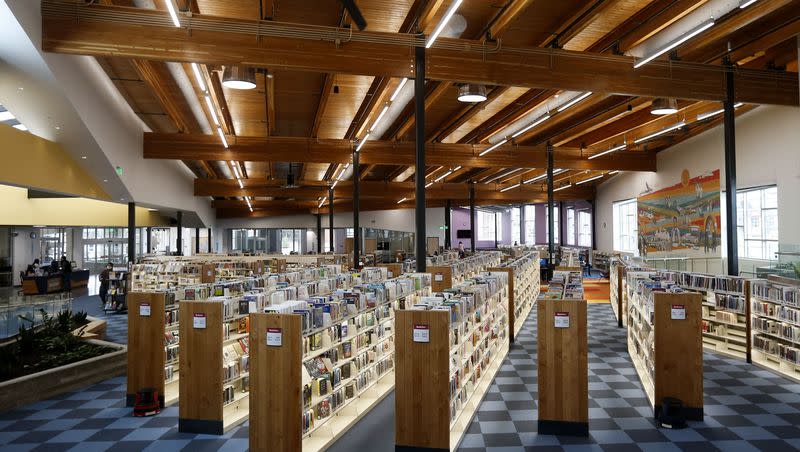Gen Z and millennials are hanging out at ... libraries?

For the digital natives of Gen Z and many tech-savvy millennials, reading books and using social media are not mutually exclusive, a recent study found.
Researchers from Portland State University found that despite ubiquitous use of social media, 54% of these two demographics had frequented local libraries within the past 12 months.
Writing for The Conversation, the authors of the study marveled at the “unlikely love affair” that these young Americans have with libraries. Their study, conducted in partnership with the American Library Association, was released in November.
Not all the news is good. Not everyone who visits a library is a reader.
Nearly one-quarter of people who visited a library during the 12-month window don’t consider themselves readers and, more broadly, 43% of Gen Z and millennials don’t identify as readers.
Still, nearly 54% of those non-readers were going to libraries. These findings suggest a broader role that libraries continue to play in communities, offering a gathering place not only for book lovers, but also for those with other interests.
Do people still go to libraries?
In addition to books, movies and music, libraries offer people a place to gather, whether it’s to play video games, work, do homework or attend meetings.
According to the study, authored by Kathi Inman Berens and Rachel Noorda, professors of book publishing at Portland State University, “The library provides a number of things beyond books: a safe, free place to hang out; important resources and advice during big life changes such as career transition, parenthood, new language acquisition, or learning to read; Wi-Fi enabled work spaces; and creativity resources like maker spaces and media production equipment.”
Amid the loneliness epidemic, a teen mental health crisis and an ongoing battle over book bans, libraries continue to be important “third spaces” in communities that offer a place for connection at no cost, the authors said. The interest in local libraries offers hope, given that 92% of teenagers use social media every day and 25% check social media multiple times per hour, according to the same study.
The researchers described their conversations with visitors at library branches in Portland, who shared that the public library offered a relaxed environment, and chatting was permitted during activities.
Does Gen Z buy physical books?
Many members of Gen Z and millennials, who are now between the ages of 28 and 43, still like to read, and when it comes to their reading format, they prefer print over e-books and audiobooks, the study found. And when they do choose print books, 59% of Gen Z and millennials would opt for a graphic/manga version of a story as opposed to a book without images. (That preference is higher in Black and LatinX communities, according to the study.) Overall, the Gen Zers read more than millennials, the study said, and the younger the Gen Zers are, the more physical books they buy.
Libraries are also places for discovering books, the study said. A 2020 report by Noorda and Berens found that one out of three book buyers first encountered the book they bought at a library.
As for the number of visits to libraries, Gen Z had slightly more than the millennials in the 12-month research window. This finding tracks with Gen Z’s preference for printed books. The last two years have also seen growth of independent bookstores, according to the American Booksellers Association. The Portland State University study found that in the period of 12 months, 58% of Americans in the 13-40 age group purchased a book in a bookstore.

